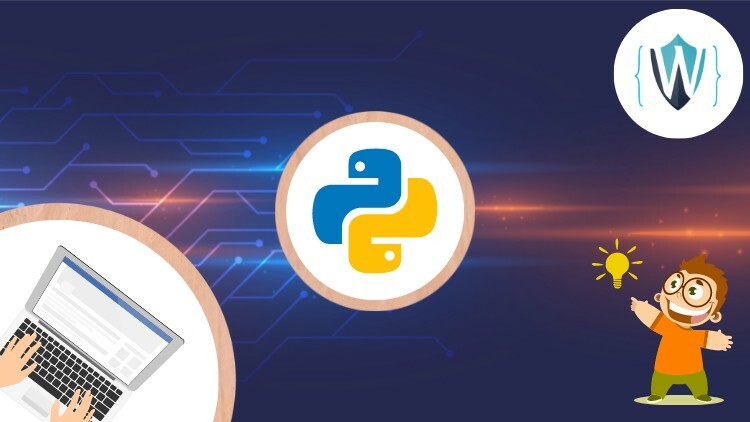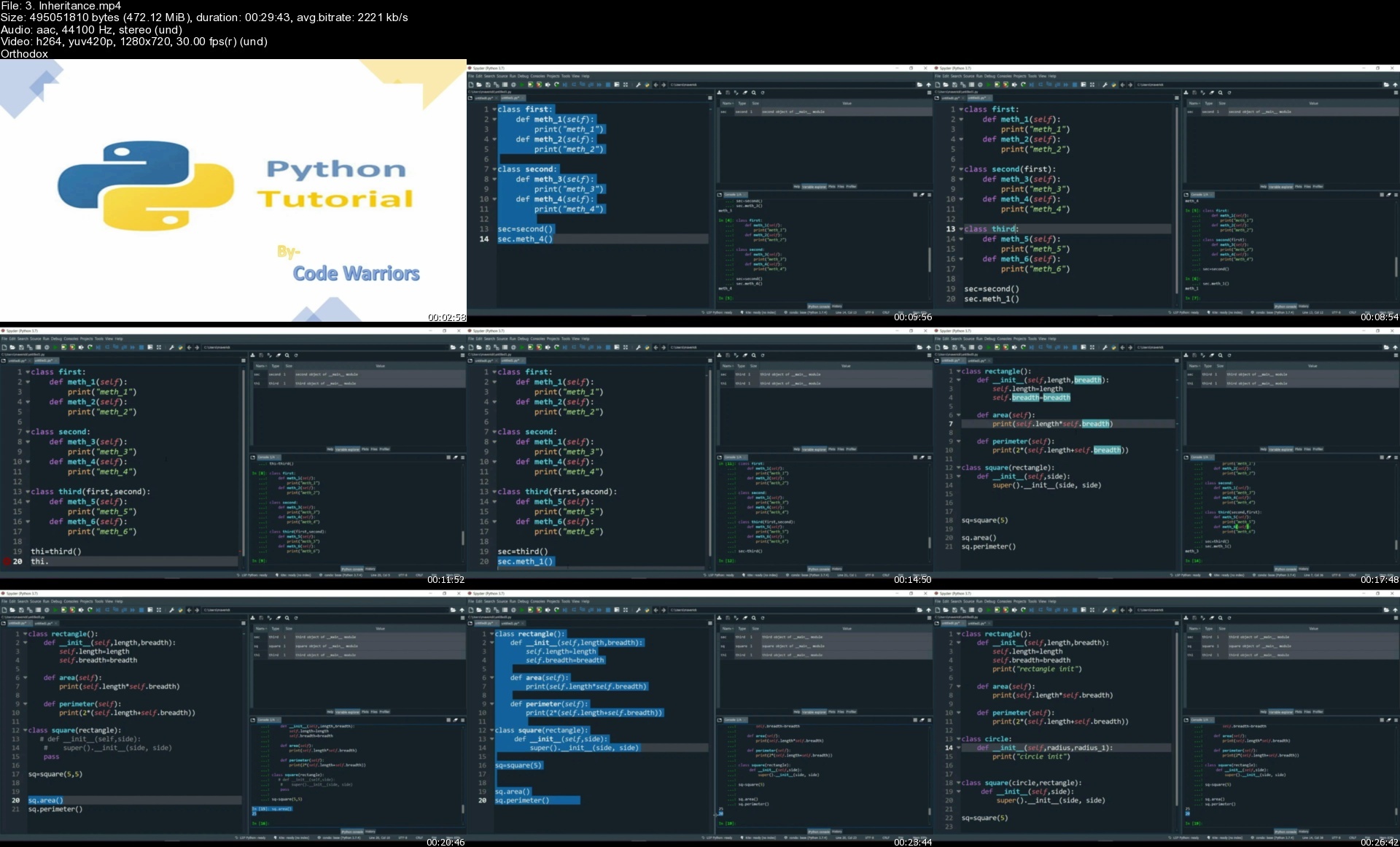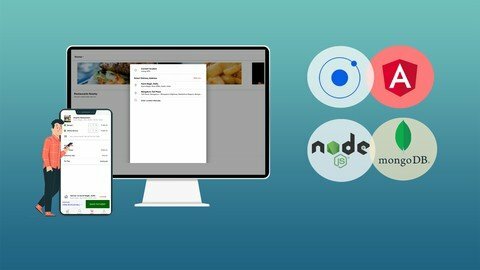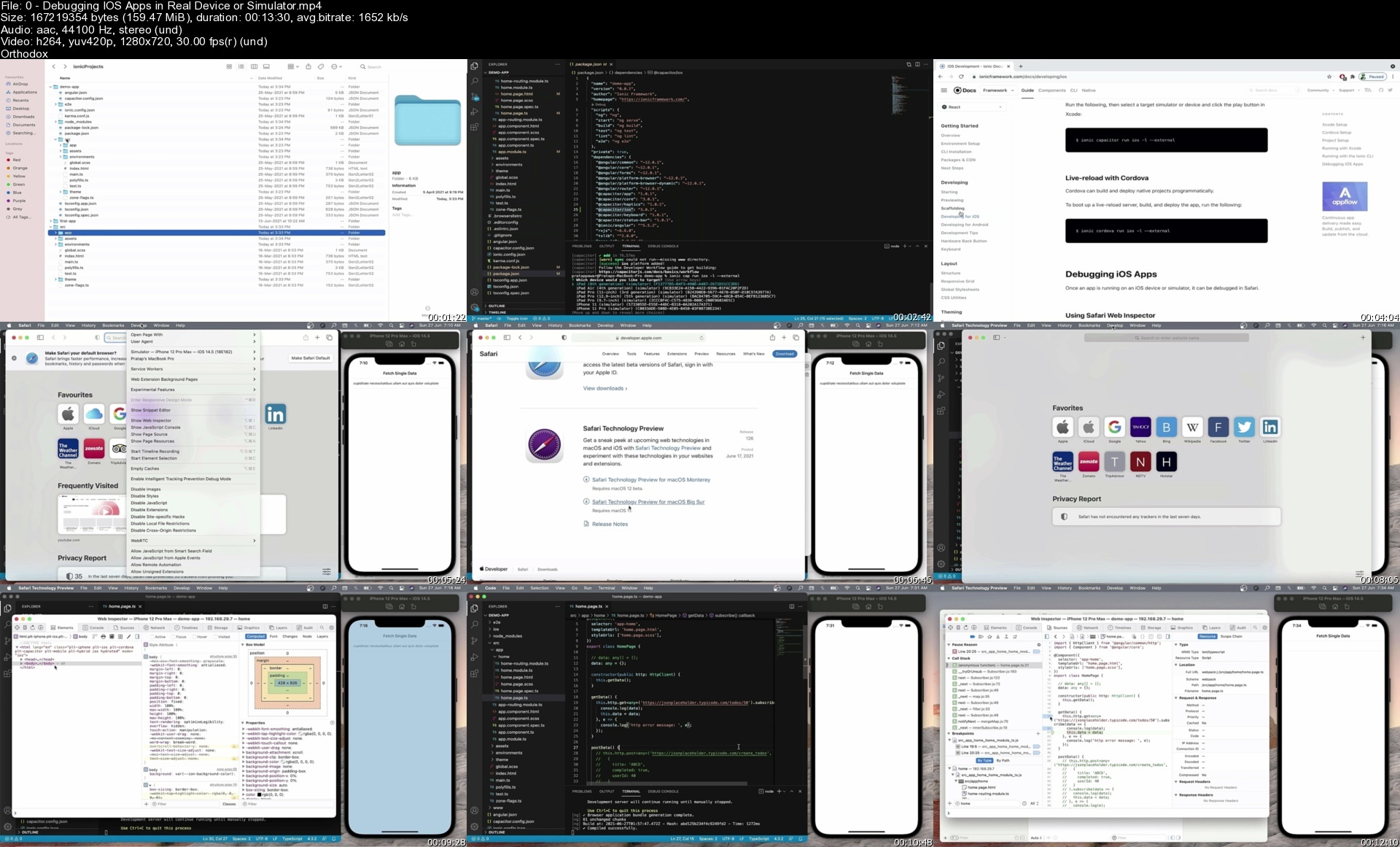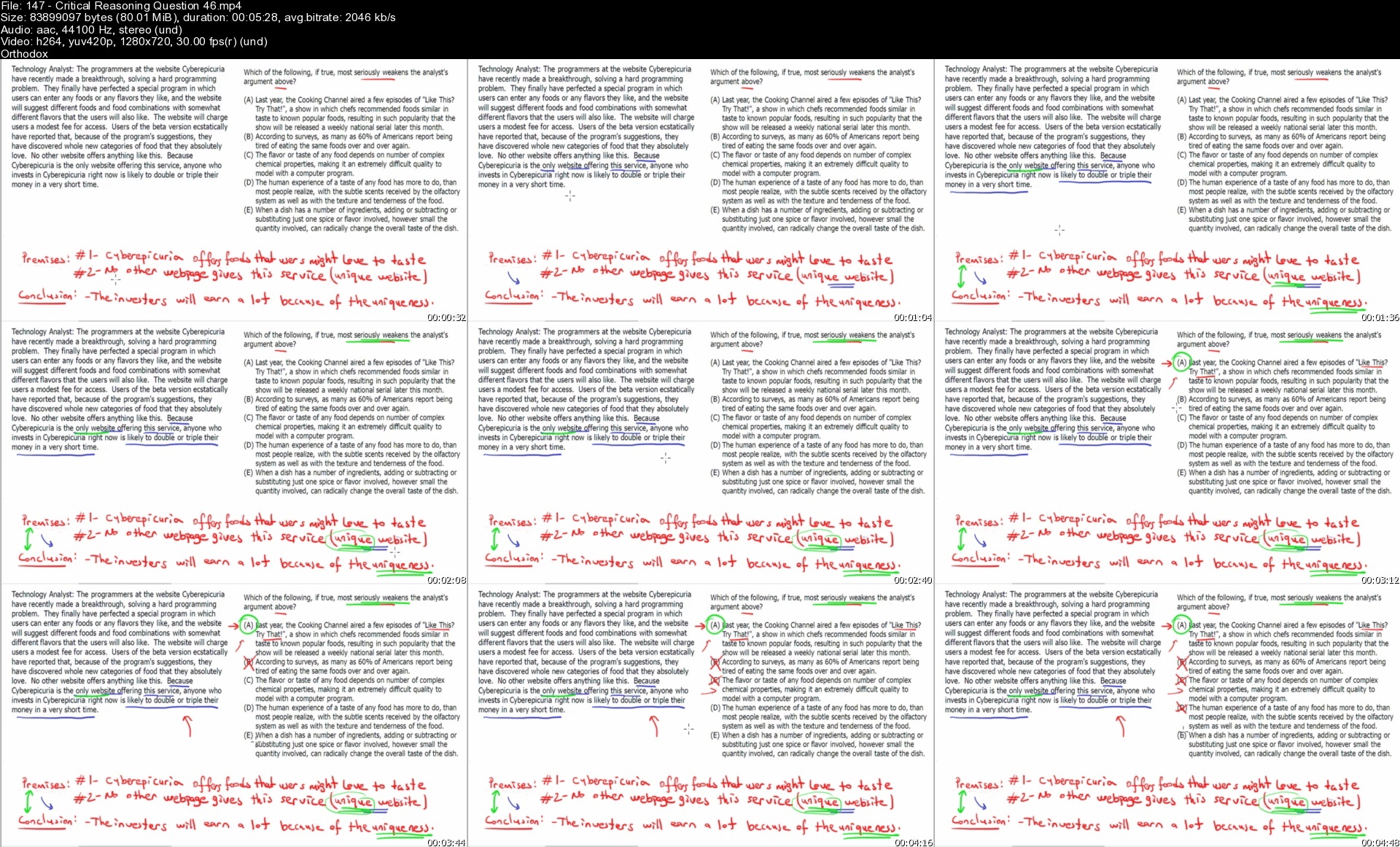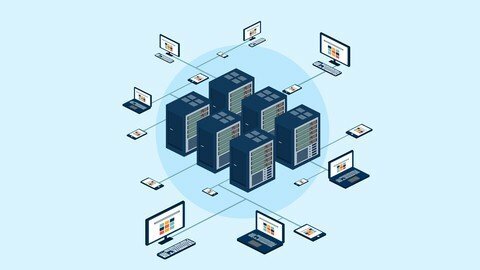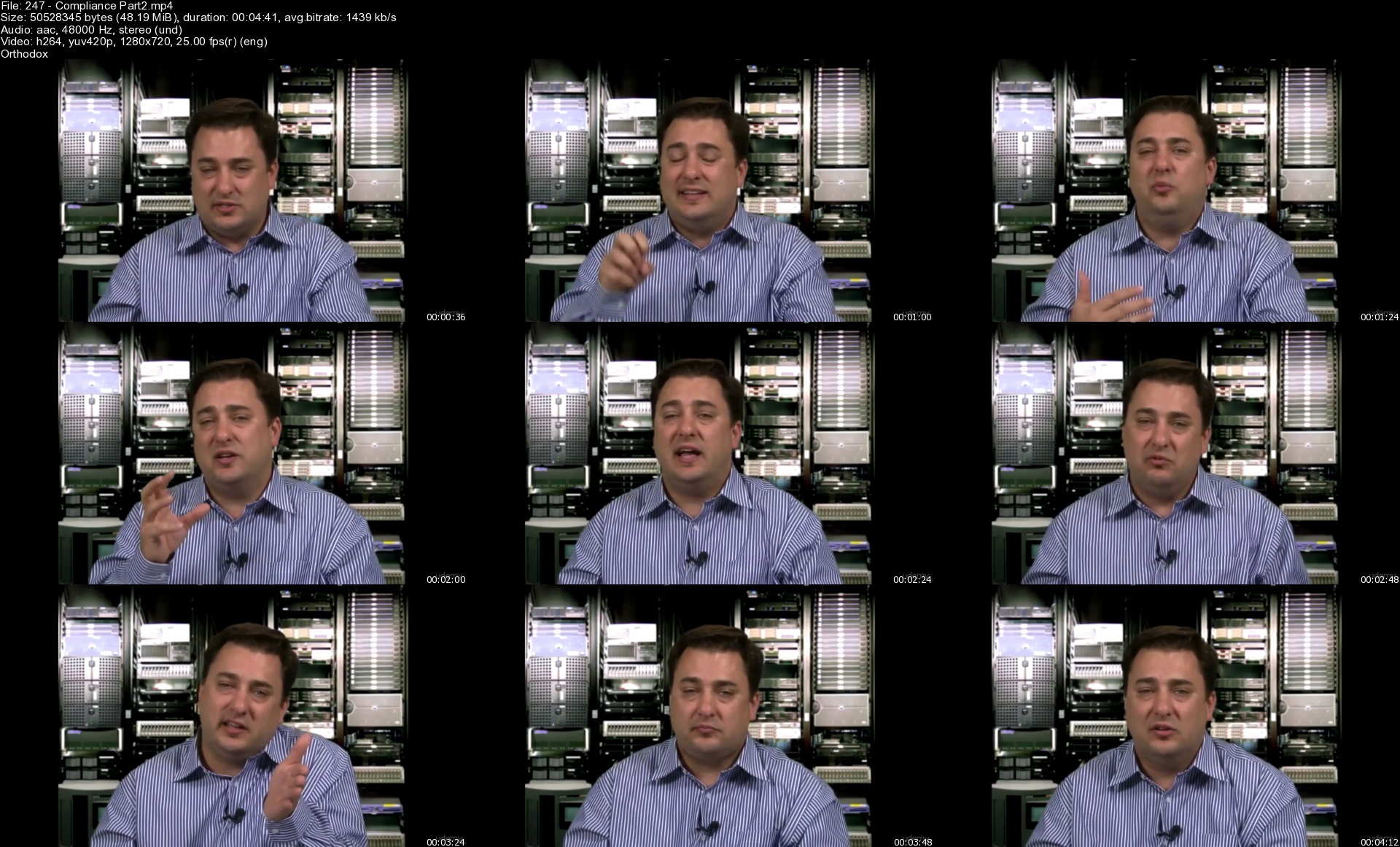Vmware Vsphere 6.5 Administration Basics Ultimate Part 1
Vmware Vsphere 6.5 Administration Basics Ultimate Part 1
Last updated 2/2019
MP4 | Video: h264, 1280x720 | Audio: AAC, 44.1 KHz
Language: English | Size: 5.11 GB | Duration: 10h 20m
VMware vSphere 6.5 Administration Basics Ultimate Part 1
What you'll learn
Understand and describe the concept behind software-defined data center
Have a thorough understanding of vSphere
Create and deploy a virtual machine or ESXi host
Comprehend vCenter Server architecture
Manage virtual machines using vCenter
Configure standard network policies
Configure new storage features in vSphere
Control user access and passwords
Understand the working of vMotion
Understand various components of vSphere
Create, clone, and export a vApp
Describe and use the content library
Migrate virtual machines and storages with VMware vMotion
Monitor resource usage and manage resource pools.
Configure vSphere HA
Requirements
The course requires the students to have operational experience of managing and administering a Windows or Linux based environment.
A brief know-how of virtualization technologies and cloud computing is an added advantage.
Description
The VMware vSphere 6.5 Administration Basics Ultimate Bootcamp is a hands-on training course that features intensive practical training that focuses on administration basics of the VMware vSphere 6.5, which includes VMware ESXi 6.5 and VMware vCenter Server 6.5. This course enables the candidates to efficiently manage and administer a vSphere infrastructure of any size for any organization. It is the foundation course for most of the other VMware technologies courses and also provides a starting point to explore deeper in the field of software-defined data center.The VMware vSphere 6.5 Administration Basics Ultimate Bootcamp course covers the fundamental tools and techniques required to plan, install and administer a VMware environment including disaster recovery and backup. It also teaches the students on creating, configuring and securing virtual machines. The students will get a basic understanding of licensing and different components of the VMware vSphere suite of applications. The course will be helpful in preparing for the Certified Virtualization Expert (CVE) exam from VMware.
Overview
Section 1: Course Introduction
Lecture 1 Course Introduction
Lecture 2 Instructor Introduction
Section 2: Chapter 01 - Getting Started with PowerPoint
Lecture 3 Learn IT! Do IT! Know IT!
Lecture 4 Certified Virtualization Expert (CVE) Certification
Section 3: Chapter 02 - Virtualization Overview
Lecture 5 Introduction
Lecture 6 Topic 1: VMware Virtualization Overview
Lecture 7 Topic 1: VMware Virtualization
Lecture 8 The Software-Defined Datacenter (SDDC)
Lecture 9 vCloud Suite 7.0
Lecture 10 Class Exercise - Why Virtualize?
Lecture 11 Why Virtualize? - Simplified Management!
Lecture 12 VMware TCO Comparison Calculator
Lecture 13 What is Virtual Infrastructure?
Lecture 14 VMware vSphere 6.x
Lecture 15 Type 1 and Type 2 Hypervisors
Lecture 16 Hypervisors Comparison
Lecture 17 What is Virtual Machine (VM)
Lecture 18 Topic 2: Other VMware & 3rd Party Virtualization Virrtual Machine (VM)?
Lecture 19 VMware Horizon View 7.x (Virtual Desktop Infrastructure)
Lecture 20 VMware Horizon FLEX
Lecture 21 VMware Workstation Pro 12.5
Lecture 22 VMware Fusion 8.5
Lecture 23 VMware Workstation Player
Lecture 24 Windows Server Virtualization Hyper-V (Windows Server 2012 R2)
Lecture 25 System Center Virtual Machine Manager 2012 R2
Lecture 26 XenServer Enterprise v7.x
Lecture 27 XenDesktop & Essentials for XenServer
Lecture 28 Topic 3: What's New vSphere 6.5 Overview
Lecture 29 What's New in vSphere 6.5
Lecture 30 Chapter 02 Review
Section 4: Chapter 03 - Planning and Installing ESXi
Lecture 31 Introduction
Lecture 32 Chapter 03 Overview
Lecture 33 Topic 1: Planning the ESXi Deployment
Lecture 34 Physical Hardware Requirements
Lecture 35 vSphere Hypervisor 6.5 (VMware ESXi)
Lecture 36 VMware ESXi 6.5
Lecture 37 Booting ESXi from a SAN LUN (Fibre Channel or iSCSI)
Lecture 38 Booting ESXi from a SAN LUN
Lecture 39 Linux, Windows & ESXi
Lecture 40 Topic 2: vSphere 6.x Deployment Guidelines
Lecture 41 Overview of Deployment Planning
Lecture 42 ESXi Compatibility Guides
Lecture 43 Storage: Capacity and Performance
Lecture 44 VMware Capacity Planner
Lecture 45 Topic 3: vSphere Hypervisor (ESXi) Installation
Lecture 46 vSphere Hypervisor 6.x Installable
Lecture 47 ESXi Installation Options
Lecture 48 VMware Software Manager
Lecture 49 Demo: Installation of ESXi 6.5
Lecture 50 Local Configuration of ESXi 6.0 using DCUI
Lecture 51 vSphere 6.x ESXi Image Builder CLI
Lecture 52 vSphere 5.x/6.x Auto Deploy Architecture
Lecture 53 vSphere 6.x Auto Deploy for ESXi PXE Boot
Lecture 54 Auto Deploy/ESXi Image Builder in vSphere 6.5
Lecture 55 Auto Deploy/ESXi Image Builder in vSphere 6.5 - Demo
Lecture 56 Topic 4: Configuring Hostname Resolution and NTP
Lecture 57 Configuring DNS Settings
Lecture 58 Time Synchronization
Lecture 59 Topic 5: Troubleshooting ESXi
Lecture 60 ESXi Host Health Check
Lecture 61 ESXi System Logs
Lecture 62 ESXi Host Boot Process
Lecture 63 Resetting root Password ESXi 6.x
Lecture 64 Troubleshooting: hostd
Lecture 65 Troubleshooting ESXi Management Agents
Lecture 66 Purple Screen of Death (PSOD)
Lecture 67 Chapter 03 Review
Section 5: Chapter 04 - Using Tools to Administer a VMware Environment
Lecture 68 Introduction
Lecture 69 Chapter 04 Overview
Lecture 70 Topic 1: Overview of 3rd Party Tools
Lecture 71 WinSCP 5.x.x (Free)
Lecture 72 ISO Programs
Lecture 73 RVTools v 3.x
Lecture 74 Other Tools
Lecture 75 Topic 2: ESXi Management
Lecture 76 ESXi Host & vCenter Server Management Overview
Lecture 77 Direct Console User Interface (DCUI)
Lecture 78 Managing ESXi with the vSphere Client (VIC)
Lecture 79 VMware Host Client
Lecture 80 The Management User Interface (MUI) (ESXi or vCenter)
Lecture 81 Managing with the vSphere Web Client
Lecture 82 NEW vSphere Client 6.5 (HTML5)
Lecture 83 SSH Access: PuTTY, SecureCRT, WinSCP, etc.
Lecture 84 Datastore Browser
Lecture 85 Configuration of Troubleshooting Options in ESXi 6.x
Lecture 86 Troubleshooting Options: ESXi 6.x
Lecture 87 CLI Commands Overview
Lecture 88 PowerCLI 6.5 Release 1
Lecture 89 Topic 3: Linux Command Review
Lecture 90 Windows Commands vs. Linux Commands
Lecture 91 Common Command Line Interface (CLI) Options
Lecture 92 Working at the Command Line (CLI)
Lecture 93 ESXi 6.x Text Editor
Lecture 94 Topic 4: Troubleshooting Host/VC Connections
Lecture 95 Cannot Login Using any Client
Lecture 96 Chapter 04 Review
Section 6: Chapter 05 - vCenter Server 6.5 and Licensing
Lecture 97 Introduction
Lecture 98 Chapter 05 Overview
Lecture 99 Topic 1: Licensing
Lecture 100 vCenter Server 6.x & ESXi Host Licensing Model
Lecture 101 vSphere Essentials 6.5 for Small Business
Lecture 102 vSphere 6.5 License Types and Pricing
Lecture 103 vSphere with Operations Management Enterprise Plus (vSOM)
Lecture 104 Upgrade Enterprise to Enterprise Plus Promotion - 50% off
Lecture 105 Topic 2: Planning vCenter Server Deployment
Lecture 106 vCenter Server 6.5 Summary
Lecture 107 Windows vCenter Server 6.5 Specs
Lecture 108 Windows vCenter Database Specs
Lecture 109 vCenter Server Virtual Appliance (vCSA) 6.0 Specifications
Lecture 110 vCenter Server Virtual Appliance (vCSA) 6.5 Specifications
Lecture 111 Comparing Windows vCenter 6.0 to vCSA 6.0/vCSA 6.5
Lecture 112 vCenter Server 6.0/6.5 Host Functionality
Lecture 113 vCenter Server 6.0/6.5 Managing Multiple Locations
Lecture 114 vCenter Server 6.0/6.5 Connection through SSO
Lecture 115 VC Server 6.x Architecture
Lecture 116 Components of vCenter 6.x - Platform Services Controller (PSC)
Lecture 117 Components of vCenter 6.x - vCenter Server
Lecture 118 Topologies for vCenter 6.x
Lecture 119 HA Topologies for vCenter 6.5
Lecture 120 vCenter Server APIs
Lecture 121 vCenter Server 6.x Database Sizing
Lecture 122 Backup Strategy for vCenter Server
Lecture 123 Native vCenter Server Backup
Lecture 124 Native vCenter Server Restore
Lecture 125 vCenter Server HA
Lecture 126 Topic 3: vCenter Server Installation
Lecture 127 vCenter 6.0/6.5 Installation (Windows or VCSA)
Lecture 128 Windows vCenter 6.5 Installation
Lecture 129 vCenter Server Appliance 6.5 for Embedded PSC (Linux Photon)
Lecture 130 vCenter Server 6.0/6.5 Post Install
Lecture 131 Topic 4: vSphere Web Client & vSphere Client
Lecture 132 vSphere Web Client
Lecture 133 Client Integration Plugin (CIP)
Lecture 134 vSphere Web Client 6.5
Lecture 135 vSphere Web Client - Requirements
Lecture 136 vSphere Client (HTML5)
Lecture 137 Using vSphere Web Client 6.5
Lecture 138 Summary of Clients in vSphere 6.5
Lecture 139 Topic 5: vCenter Server Inventory
Lecture 140 vCenter Server Home Page
Lecture 141 Hosts and Clusters: Datacenters
Lecture 142 Hosts and Clusters: Folders and Clusters (Default View)
Lecture 143 VMs and Templates: Subfolders
Lecture 144 vCenter Inventory: VMs/Templates Additional Information
Lecture 145 Storage: Folders and Datastores
Lecture 146 Networking: Portgroups & Distributed Switches (vDS)
Lecture 147 Content Library Basics
Lecture 148 What's New in Content Library 6.5
Lecture 149 Content Library Creation in 6.5
Lecture 150 Topic 6: Managing vCenter Server
Lecture 151 Scheduled Tasks
Lecture 152 Events
Lecture 153 Sessions
Lecture 154 Tasks/Alarms/Work in Progress & Logged On As
Lecture 155 New Recent Objects Pane
Lecture 156 Flings at VMware Labs
Lecture 157 Topic 7: Troubleshooting vCenter Server and Database
Lecture 158 Refreshing vCenter Server & ESXi
Lecture 159 Monitoring - Hardware Status
Lecture 160 Monitoring - vCenter Server Status
Lecture 161 VCSA root Account Timeout
Lecture 162 Chapter 05 Review
Section 7: Chapter 06 - Configuring Networking
Lecture 163 Introduction
Lecture 164 Chapter 06 Overview
Lecture 165 Topic 1: Creating & Modifying Virtual Networks
Lecture 166 Networking Terms
Lecture 167 vSphere 6.x Virtual Switch Types
Lecture 168 Network Connections in ESXi
Lecture 169 Add/Edit Networking
Lecture 170 Standard Virtual Switches (vSS)
Lecture 171 More Lanes on the Highway
Lecture 172 Virtual Switch & Connection Type Identification
Lecture 173 VMware Assigned MAC Addresses
Lecture 174 Custom MAC Address
Lecture 175 Virtual Switch Physical NIC Configurations
Lecture 176 NIC Teaming
Lecture 177 Cisco Discovery Protocol on vSS
Lecture 178 Modifying vSS Properties (Ports Tab in VIC)
Lecture 179 Ports
Lecture 180 Modifying vSwitch Properties (Network Adapters Tab)
Lecture 181 VLAN Overview
Lecture 182 VLAN Implementations
Lecture 183 Standard vSwitch VLAN Configuration
Lecture 184 Standard vSwitch Protection and VLANs
Lecture 185 Standard vSwitch & Port Group Policy Settings: Security
Lecture 186 Standard vSwitch and Port Group Policy Exceptions: Traffic Shaping
Lecture 187 Standard vSwitch and Port Group Policy Exceptions: NIC Teaming
Lecture 188 Network Failure and NIC Teaming Options
Lecture 189 Load Balancing Method: Route Based on the Originating Virtual Port ID (Default)
Lecture 190 Load Balancing Method: Route Based on Source MAC Hash
Lecture 191 Load Balancing Method: Route Based on IP Hash (Source + Destination)
Lecture 192 Requirements for IP Hash
Lecture 193 Port Group: Override vSwitch Failover Order
Lecture 194 Multiple Policies Applied to a Single Team
Lecture 195 vSphere Packet Routing
Lecture 196 Overriding Default Gateway of a Vmkernal Adapter
Lecture 197 Network Performance Improvements
Lecture 198 Physical Switch Configuration
Lecture 199 Topic 2: vSphere Distributed Switches
Lecture 200 vSphere Distributed vSwitch (vDS) Overview
Lecture 201 vSphere Distributed Switch (vDS) New Features in vSphere 5.0
Lecture 202 vSphere Distributed Switch (vDS) New Features in vSphere 5.1
Lecture 203 vSphere Distributed Switch (vDS) New Features in vSphere 5.5
Lecture 204 vSphere Distributed Switch (vDS) New Features in vSphere 6.0
Lecture 205 vSphere Distributed Switch (vDS) New Features in vSphere 6.5
Lecture 206 Creating a vSphere Distributed Switch
Lecture 207 Edit vDS Settings
Lecture 208 Edit vDS Uplink Settings
Lecture 209 Edit vDS Port Group Settings
Lecture 210 Port Binding Methods
Lecture 211 Private VLAN (PVLAN) Tagging
Lecture 212 Private VLANs
Lecture 213 Migrating VMkernel Port to vDS
Lecture 214 Network I/O Control (NIOC)
Lecture 215 Network I/O Control (NIOC) - Best Practices
Lecture 216 Create NetFlow
Lecture 217 Using Port Mirroring
Lecture 218 vDS Health Check
Lecture 219 vDS Backup & Restore
Lecture 220 Traffic Filtering and Marking
Lecture 221 Per VM NIOC 3 Settings
Lecture 222 Support for ERSPAN
Lecture 223 Configuring ERSPAN
Lecture 224 Networking Review
Lecture 225 Chapter 06 Review
Section 8: Chapter 07 - Configuring Storage
Lecture 226 Introduction
Lecture 227 Chapter 07 Overview
Lecture 228 Topic 0: New Storage Features in vSphere 6.5
Lecture 229 Storage Related Enhancements (1)
Lecture 230 Storage Related Enhancements (2)
Lecture 231 Topic 1: Storage Concepts
Lecture 232 Storage Terms
Lecture 233 SAN vs NAS in vSphere
Lecture 234 Device and Path Naming
Lecture 235 vSphere's Family of Storage APIs
Lecture 236 Storage API - Array Integration
Lecture 237 Storage API - Storage Awareness (VASA)
Lecture 238 Comparison of Storage Provider Versions (VASA)
Lecture 239 Multipathing
Lecture 240 Storage API - Multipathing (PSA)
Lecture 241 Path Selection Considerations
Lecture 242 Viewing Multipathing from VIC
Lecture 243 Viewing Multipathing - Web Client
Lecture 244 Example of 3rd Party Multipathing Plugin Installation (NMP)
Lecture 245 All Paths Down (APD)
Lecture 246 All Paths Down (APD) Cont.
Lecture 247 Storage API - I/O Filtering
Lecture 248 Storage API - I/O Filtering Info
Lecture 249 Storage I/O Control (SIOC)
Lecture 250 SIOC setup in Web Client
Lecture 251 SIOC Enhancements
Lecture 252 Configuring SIOC v2 Policy
Lecture 253 SIOC Monitoring
Lecture 254 Scanning LUNs - iSCSI/Fibre Channel
Lecture 255 Topic 2: iSCSI Storage (GUI & Command Line)
Lecture 256 Internet Small Computers Systems Interface (iSCSI) Overview
Lecture 257 iSCSI Terms for ESX / ESXi
Lecture 258 ESX / ESXi and iSCSI SAN Environment and Addressing
Lecture 259 Hardware vs. Software Initiators
Lecture 260 Multipathing with iSCSI
Lecture 261 Setup Steps - Multipathing with Software iSCSI
Lecture 262 iSCSI Software Initiator Networking
Lecture 263 Configuring iSCSI
Lecture 264 Jumbo Frames
Lecture 265 Configure Software Initiator: CHAP Authentication
Lecture 266 iSCSI Software Initiator Troubleshooting
Lecture 267 iSCSI Vendors and Products
Lecture 268 Topic 3: Fibre Channel Storage
Lecture 269 What is Fibre Channel?
Lecture 270 Fibre Channel Terms for ESXi
Lecture 271 ESX / ESXi and Fibre Channel SAN Environment and Addressing
Lecture 272 Multipathing with Fibre Channel
Lecture 273 Fibre Channel Vendors and Products
Lecture 274 Network/Storage Architecture Review
Lecture 275 Topic 4: VMFS Datastores (GUI & Command Line)
Lecture 276 Virtual Machine File System (VMFS-5)
Lecture 277 Virtual Machine File System (Updates in 5.5/6.x)
Lecture 278 About VMFS6
Lecture 279 New Block Sizes for Small Files and Large Files
Lecture 280 File Block Usage Example
Lecture 281 vSphere Storage APIs - Array Integration & Automatic UNMAP
Lecture 282 VMFS6 vs VMFS5
Lecture 283 Upgrade VMFS-3 to VMFS-5
Lecture 284 Upgrading VMFS5
Lecture 285 Viewing and Creating a VMFS-5 Datastore
Lecture 286 Extending your VMFS Datastore using Extents
Lecture 287 Add an Extent to Existing VMFS
Lecture 288 Expand an ESXi 6.x VMFS Volume
Lecture 289 Hidden System Files on a VMFS
Lecture 290 Topic 5: NAS Storage and NFS Datastores (GUI & Command Line)
Lecture 291 Network Attached Storage (NAS)
Lecture 292 NFS v4.1
Lecture 293 NFS 4.1 Improvements in 6.5
Lecture 294 NFS Components, Addressing and Access Control with NFS on Linux
Lecture 295 NFS target on Windows 2003 R2 & higher
Lecture 296 Mount an NFS Datastore to Host
Lecture 297 Topic 6: Raw Device Mapping (RDM)
Lecture 298 Raw Device Mapping (RDM)
Lecture 299 RDM Compatibility Modes
Lecture 300 Raw Device Mapping
Lecture 301 Topic 7: Solid State Disks (SSD)
Lecture 302 Solid State Disks (SSD)
Lecture 303 Using SMART with SSD
Lecture 304 When ESXi fails to identify SSDs
Lecture 305 vSphere Virtual Flash
Lecture 306 Configure a Virtual Flash Resource
Lecture 307 Configure Virtual Flash Host Swap
Lecture 308 Virtual Flash Read Cache
Lecture 309 Virtual Flash Read Cache (cont)
Lecture 310 Topic 8: Storage & Management Solutions
Lecture 311 vFoglight for Storage - Quest
Lecture 312 vOptimizer Pro (vOPS Storage Optimizer) - Quest Software
Lecture 313 Topic 9: VMware Virtual SAN (VSAN)
Lecture 314 VSAN Overview
Lecture 315 VSAN Device Configuration
Lecture 316 VSAN Cluster Configuration
Lecture 317 VSAN Architecture
Lecture 318 VSAN 6.0 - What's new
Lecture 319 VSAN Version 6.2
Lecture 320 VSAN Version 6.5
Lecture 321 VSAN Version 6.6
Lecture 322 Topic 10: vSphere Virtual Volumes (VVols)
Lecture 323 vSphere Virtual Volumes (Vvols) - Concepts
Lecture 324 vSphere Virtual Volumes (Vvols) - Architecture
Lecture 325 vSphere Virtual Volumes (Vvols) - Characteristics
Lecture 326 vSphere Virtual Volumes (Vvols) - Considerations, Limitations & Guidelines
Lecture 327 Virtual Volumes Replication
Lecture 328 Replication Storage Policies
Lecture 329 VVols Certified Storage Vendors
Lecture 330 Chapter 07 Review
Section 9: Chapter 08 - VM Creation, Configuration, and Snapshots
Lecture 331 Introduction
Lecture 332 Chapter 08 Overview
Lecture 333 Topic 1: Create a VM
Lecture 334 VM Virtual Hardware
Lecture 335 Types of Virtual NICs (vNIC)
Lecture 336 Virtual Machine Files
Lecture 337 VMDK Disk Provisioning
Lecture 338 Virtual Disk
Lecture 339 VM HW v13 Properties
Lecture 340 VM Hardware Versions Compared
Lecture 341 Virtual SCSI Controller Type
Lecture 342 Install Guest OS into VM
Lecture 343 VM Console & Menus - VIC
Lecture 344 VMRC or Web Console 6.5
Lecture 345 VMware Tools
Lecture 346 VMware Tools 5.0 & earlier vs 5.1/5.5/6.0
Lecture 347 VMware Tools 10.1 & 10.0.12
Lecture 348 Topic 2: Create Multiple VMs, Templates & Clones
Lecture 349 Clones & Templates
Lecture 350 Deploy VM from Template
Lecture 351 Customizing the OS in a Virtual Machine
Lecture 352 Customization Specification Manager
Lecture 353 Topic 3: Virtual Appliances
Lecture 354 Virtual Appliances
Lecture 355 Import Virtual Appliances
Lecture 356 Export VM to OVF Format
Lecture 357 Content Library - Store Template
Lecture 358 Use Template from Library
Lecture 359 Customize existing VM
Lecture 360 Deploying Across Datacenters
Lecture 361 Topic 4: Configuration and Use of vApps
Lecture 362 vApp Overview
Lecture 363 Creating and using vApps
Lecture 364 Topic 5: Manage VMs
Lecture 365 Hot Add Memory and CPUs
Lecture 366 VM Properties - Hardware Tab
Lecture 367 Adding USB Devices to VM
Lecture 368 VM Properties - Options Tab
Lecture 369 Resize a Virtual Disk
Lecture 370 Extend VMDK
Lecture 371 Dell's extpart - NO REBOOT
Lecture 372 Extend partitions using gparted
Lecture 373 vOptimizer Pro
Lecture 374 Raxco PerfectStorage
Lecture 375 Renaming a Virtual Machine
Lecture 376 Topic 6: Virtual Machine Startup / Shutdown
Lecture 377 Startup/Shutdown of VMs
Lecture 378 Enabling VM Startup/Shutdown
Lecture 379 Topic 7: Virtual Machine Snapshots
Lecture 380 Virtual Machine Snapshots
Lecture 381 Files used by Snapshots
Lecture 382 Taking Snapshots
Lecture 383 Snapshot Manager
Lecture 384 Reverting to a Snapshot
Lecture 385 Deleting Snapshots
Lecture 386 Consolidating Snapshots
Lecture 387 Topic 8: Virtual Machine Troubleshooting & Best Practices
Lecture 388 Troubleshooting VM Problems
Lecture 389 Differences between VMs and Physical Servers (Best Practices)
Lecture 390 Chapter 08 Review
Section 10: Chapter 09 - Security and Permissions
Lecture 391 Introduction
Lecture 392 Chapter 09 Overview
Lecture 393 Topic 1: Controlling User Access and Passwords
Lecture 394 Types of Users
Lecture 395 ESXi Account Security
Lecture 396 ESXi Account Security Configuration
Lecture 397 ESXi Security Enhancements
Lecture 398 Lockdown Modes in vSphere 6.x
Lecture 399 vSphere 6.5: Security Enhancements
Lecture 400 VM Encryption
Lecture 401 VM Encryption Workflow
Lecture 402 vMotion Encryption
Lecture 403 ESXi 6.5 Secure Boot
Lecture 404 UEFI Secure Boot for ESXi 6.5 Hosts
Lecture 405 VM Secure Boot
Lecture 406 vCenter/ESXi Host Security Model
Lecture 407 Permissions
Lecture 408 Global Permissions
Lecture 409 Roles
Lecture 410 Privileges Explained
Lecture 411 ESXi Host Permissions
Lecture 412 Windows vCenter Permissions
Lecture 413 vCSA Permissions
Lecture 414 Topic 2: ESXi Active Directory (AD) Integration
Lecture 415 AD ESXi Authentication Services
Lecture 416 Assign ESXi Permissions Directly to AD Users
Lecture 417 Topic 3: Managing Firewalls
Lecture 418 ESXi Firewall
Lecture 419 TCP & UDP Ports
Lecture 420 ESXi Firewall Configuration via vSphere Web Client
Lecture 421 Topic 4: Managing Security Certificates
Lecture 422 Data Encryption
Lecture 423 Certificate Changes in vSphere 6.0
Lecture 424 VMware Certificate Management
Lecture 425 Addition Certificate Information
Lecture 426 Chapter 09 Review
Section 11: Chapter 10 - Server and VM Monitoring
Lecture 427 Introduction
Lecture 428 Chapter 10 Overview
Lecture 429 Topic 1: Optimizing Resources
Lecture 430 Transparent Memory Page Sharing
Lecture 431 TPS Modified - ESXi 5.0 - 6.x
Lecture 432 Memory Overcommitment
Lecture 433 Balloon-Driver: vmmemctl
Lecture 434 Memory Compression
Lecture 435 VMkernel Swap
Lecture 436 VM Swap Files
Lecture 437 Memory Overhead
Lecture 438 VMkernel Swap Location
Lecture 439 Host System Swap File
Lecture 440 Memory Usage
Lecture 441 ESXi v5.x vs v6.x Reclamation
Lecture 442 Virtual CPUs (vCPUs)
Lecture 443 VMkernel CPU Load Balancing
Lecture 444 VMs' CPU & Memory Resource Setting Terms
Lecture 445 CPU Resource Settings
Lecture 446 Memory Resource Settings
Lecture 447 ESXi 6.x Utilization per VM
Lecture 448 Resource Shares
Lecture 449 Topic 2: Resource Pools
Lecture 450 Resource Pools Overview
Lecture 451 Resource Pool Configuration
Lecture 452 Expandable Reservations
Lecture 453 Troubleshooting Memory Resources
Lecture 454 Best Practices for VM Resources
Lecture 455 Topic 3: Latency Sensitive Applications
Lecture 456 Deploying Extremely Latency-Sensitive Applications
Lecture 457 Latency-Sensitive Feature
Lecture 458 Best Practices for Extremely Latency-Sensitive Applications
Lecture 459 Topic 4: Performance Monitoring
Lecture 460 Performance Monitoring - Overview
Lecture 461 Performance Monitoring - Advanced
Lecture 462 Customize Performance Chart
Lecture 463 Troubleshooting Performance
Lecture 464 Problem: High CPU Utilization
Lecture 465 Problem: High Memory Utilization
Lecture 466 Problem: High Disk Utilization
Lecture 467 Problem: High Network Utilization
Lecture 468 VMware vRealize Operations (formerly vCenter Operations Management Suite)
Lecture 469 Topic 5: Configuring Alarms
Lecture 470 vCenter Alarms
Lecture 471 Default Alarms in vCenter
Lecture 472 Alarm Settings
Lecture 473 Configure vCenter Notifications
Lecture 474 Topic 6: ESXi & vCenter Logs
Lecture 475 ESXi 5.x/6.x Log Files from DCUI
Lecture 476 ESXi 6.x Log File Locations
Lecture 477 ESXi 6.x Log Files
Lecture 478 System Logs
Lecture 479 Collecting Windows vCenter Log Files
Lecture 480 GUI Collecting vCSA Log Files in 6.x
Lecture 481 Collecting vCenter Diagnostics Data
Lecture 482 Configuring Syslog on ESXi (GUI)
Lecture 483 Sending VC Event Stream to a Syslog Server
Lecture 484 Syslog Servers
Lecture 485 Logging Enhancements in VC 6.5
Lecture 486 VMware Log Insight
Lecture 487 Chapter 10 Review
Section 12: Chapter 11 - Advanced ESXi and vCenter Server Management
Lecture 488 Introduction
Lecture 489 Chapter 11 Overview
Lecture 490 Topic 1: Storage vMotion
Lecture 491 Storage vMotion Migration
Lecture 492 Requirements for Storage vMotion
Lecture 493 Storage vMotion Architecture
Lecture 494 Storage vMotion in vSphere 5.x/6.x
Lecture 495 Storage vMotion in vSphere 5.x/6.0
Lecture 496 Topic 2: Configuring vMotion
Lecture 497 vMotion Migration
Lecture 498 How vMotion Works
Lecture 499 vMotion: Host Requirements
Lecture 500 Identifying CPU Characteristics
Lecture 501 vMotion Errors and Warnings
Lecture 502 Advanced vMotion Errors
Lecture 503 vMotion Improvements
Lecture 504 Enhanced vMotion Migration "Shared Nothing" vMotion
Lecture 505 Enhanced vMotion Migration "Shared Nothing" vMotion ( cont.)
Lecture 506 Cross vSwitch vMotion
Lecture 507 Cross vCenter vMotion
Lecture 508 Long Distance vMotion
Lecture 509 Topic 3: Distributed Resource Scheduler (DRS) Cluster
Lecture 510 vCenter Host Cluster
Lecture 511 Distributed Resource Scheduler (DRS) Overview
Lecture 512 DRS Cluster in the vCenter Inventory
Lecture 513 Retaining Host Resource Pools
Lecture 514 Configure Automation Level
Lecture 515 Initial Placement
Lecture 516 DRS Recommendations, Faults & History
Lecture 517 Virtual Machine Rules
Lecture 518 Groups & Rules - Virtual Machine to Host
Lecture 519 VM Overrides
Lecture 520 Distributed Power Management (DPM)
Lecture 521 Enhanced vMotion Compatibility (EVC)
Lecture 522 VM Swapfile location
Lecture 523 Planned Downtime: Maintenance Mode
Lecture 524 Snapshot & Restore DRS tree
Lecture 525 vSphere 6.5 DRS Enhancements
Lecture 526 Topic 4: DRS Cluster Monitoring
Lecture 527 Monitor Cluster Objects State
Lecture 528 Monitoring the DRS Cluster - Resource Allocation
Lecture 529 Monitoring the DRS Cluster - DRS Resource Distribution Graph
Lecture 530 Monitoring the DRS Cluster - What to look for .
Lecture 531 Topic 5: Storage Policy-Based Management (SPBM)
Lecture 532 Storage Policy-Based Management (SPBM)
Lecture 533 vSphere Storage API for Storage Awareness (VASA) Storage Providers
Lecture 534 VM Storage Policies
Lecture 535 Apply VM Storage Policies to VMs
Lecture 536 Apply VM Storage Policies to VMs (cont.)
Lecture 537 Topic 6: Datastore Clusters & Storage DRS (SDRS)
Lecture 538 Datastore Clusters
Lecture 539 Storage DRS (SDRS)
Lecture 540 Create a Datastore Cluster for SDRS
Lecture 541 Datastore Cluster Information
Lecture 542 Edit a Datastore Cluster
Lecture 543 Topic 7: Enhanced Linked Mode
Lecture 544 Manage Multiple vCenters - vSphere 6.0/6.5
Lecture 545 Enhanced Linked Mode 6.x
Lecture 546 Chapter 11 Review
System administrators,System engineers working in IT administration,Support and technical staff,Professionals who are responsible for installation, deployment and optimization of cloud computing and virtualized infrastructure.
Homepage
